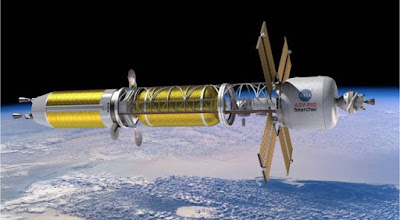| SpaceX's Mars Starship prototype "Starhopper" hovers over its launchpad during a test flight in Boca Chica, Texas, U.S. August 27, 2019. REUTERS/Trevor Mahlmann |
Topics: Mars, NASA, Space Exploration, Spaceflight
(Reuters) - SpaceX test-launched an early prototype of the company’s Mars rocket on Tuesday, unnerving residents near the Texas site and clearing another key hurdle in billionaire entrepreneur Elon Musk’s interplanetary ambitions.
After the launch, Musk congratulated engineers from SpaceX, short for Space Exploration Technologies Corp, and posted a photo of Starhopper touching down on its landing pad with billowing clouds of dust and sand rising from the ground.
“One day Starship will land on the rusty sands of Mars,” Musk tweeted.
The prototype, dubbed Starhopper, slowly rose about 500 feet (152 m) off its launch pad in Brownsville, Texas, and propelled itself some 650 feet (198 m) eastward onto an adjacent landing platform, completing a seemingly successful low-altitude test of SpaceX’s next-generation Raptor engine.
The Raptor is designed to power Musk’s forthcoming heavy-lift Starship rocket, a reusable two-stage booster taller than the Statue of Liberty that is expected to play a central role in Musk’s interplanetary space travel objectives, including missions to Mars.
SpaceX's Mars rocket prototype rattles nearby residents in Texas flight test
Joey Roulette, Reuters Science


